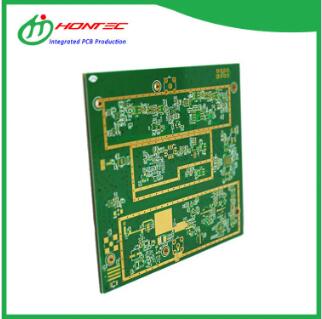Exploring the Varieties of Multilayer Board Stacks in Electronics
2024-08-12
As electronic devices become more compact and powerful, the role of multilayer board stacks in achieving these advancements cannot be overstated. These boards, composed of multiple layers of conductive and insulating materials, enable complex circuit designs within limited space. In this blog, we delve into the various types of multilayer board stacks, highlighting their characteristics and applications in modern electronics.
1. High-Density Interconnect (HDI) Stacks
High-Density Interconnect (HDI) stacks are characterized by their use of microvias, fine lines, and thin materials to achieve higher wiring densities compared to traditional multilayer boards. These stacks are essential for creating small, lightweight devices with complex circuitry. HDI stacks often employ sequential lamination and build-up technologies to maximize space efficiency and performance.
Applications:
- Smartphones
- Wearable technology
- IoT devices
2. Hybrid Multilayer Stacks
Hybrid multilayer stacks combine different materials and technologies within a single board to optimize performance for specific applications. For example, a hybrid stack might integrate both rigid and flexible sections, or it might combine traditional FR4 materials with advanced substrates like PTFE for high-frequency applications. This versatility makes hybrid stacks suitable for a wide range of complex designs.
Applications:
- Aerospace and defense systems
- High-frequency communication equipment
- Advanced automotive electronics
3. Symmetrical Multilayer Stacks
Symmetrical multilayer stacks are designed with an even distribution of layers around a central core, ensuring balanced mechanical properties and minimal warpage. This symmetry is crucial for maintaining structural integrity in boards that experience thermal or mechanical stress. These stacks are often used in applications where reliability and durability are critical.
Applications:
- Industrial control systems
- Power distribution units
- High-reliability telecommunications
4. Asymmetrical Multilayer Stacks
Asymmetrical multilayer stacks feature an uneven distribution of layers, which can be tailored to meet specific design requirements. This approach allows for the customization of electrical and mechanical properties, making it ideal for specialized applications where standard symmetrical designs may not suffice. However, asymmetrical stacks require careful design and manufacturing to prevent issues like warping or signal interference.
Applications:
- Custom electronic devices
- Specialized industrial equipment
- High-performance computing
5. Embedded Passive and Active Component Stacks
In embedded component stacks, passive elements like resistors and capacitors, or active components such as ICs, are embedded within the layers of the board itself. This design reduces the need for surface-mounted components, saving space and improving reliability. Embedded stacks are particularly beneficial in applications where miniaturization and performance are paramount.
Applications:
- Medical implants
- Compact consumer electronics
- Space-saving industrial systems
6. Multi-Substrate Multilayer Stacks
Multi-substrate multilayer stacks use different types of substrates within the same board to meet specific electrical and mechanical requirements. For instance, a board might use a high-frequency substrate for RF sections and a standard substrate for digital circuitry. This approach allows for the optimization of performance across different sections of the board.
Applications:
- Advanced RF systems
- Mixed-signal devices
- Multifunctional electronic systems
Conclusion
Multilayer board stacks are at the heart of modern electronics, enabling the development of increasingly sophisticated and compact devices. From HDI and hybrid stacks to embedded component and multi-substrate stacks, each type offers distinct advantages that cater to different design needs. Understanding these varieties helps engineers make informed decisions, ensuring that their electronic products meet the required performance, reliability, and space constraints. As electronics continue to evolve, the diversity and complexity of multilayer board stacks will play a pivotal role in shaping the future of technology.



